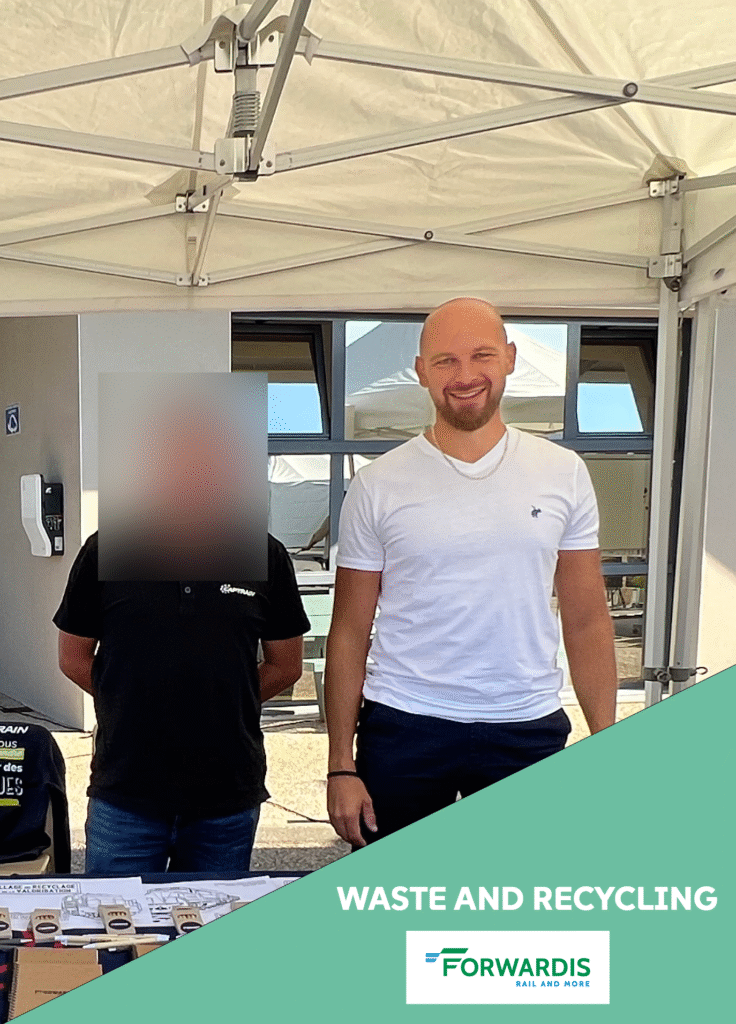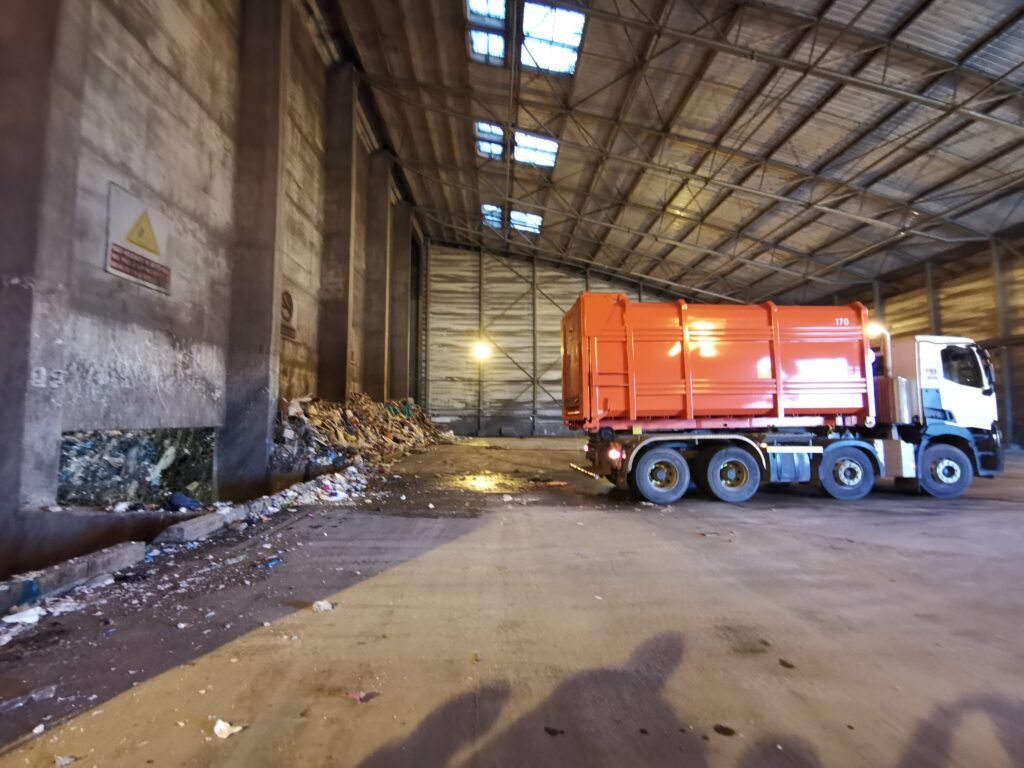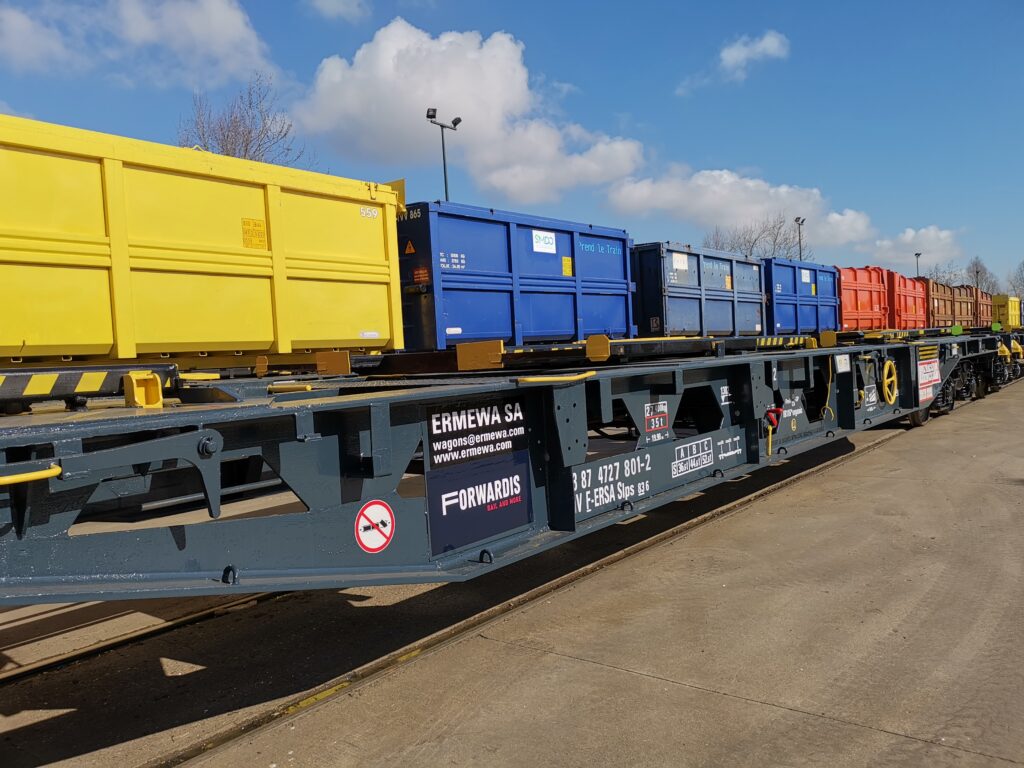Railways and Waste: combining efficiency, safety and environmental impact
David Secquepee shares his vision of rail freight transport, a sector where technical expertise, environmental performance and logistical innovation come together to promote a more sustainable economy.

As the ecological transition profoundly transforms the transport sector, rail is emerging as a strategic and responsible alternative, particularly for waste management.
In this interview, David Secquepee, Key Account Manager at Forwardis, shares his experience and expert insight into the advantages, challenges and prospects of transporting waste by rail.
INTERVIEW
David Secquepee – Key Account Manager.
‘We must manage local nuisances around stations or loading sites and deal with unpredictable weather conditions (extreme heat, snow).’
1/Can you briefly explain your role and expertise in the transport of waste by rail?
Rail transport of waste is a field that requires true versatility: technical, regulatory and organisational.
In concrete terms, my role is to devise and implement safe and efficient transport routes from production or collection sites to treatment and recovery centres. But that's not all: it also involves offering a sustainable alternative that reduces CO₂ emissions and limits negative externalities, while providing a comprehensive door-to-door logistics solution.
This requires several areas of expertise:
- Regulatory, with expertise in RID/ADR standards for hazardous waste, environmental legislation and all traceability requirements.
- Technical, with the selection of appropriate equipment (wagons, ITUs), expertise in loading/unloading procedures and coordination between all stakeholders.
- Environmental, by integrating carbon footprint reduction and drafting carbon assessments.
2/ In your opinion, what are the main advantages of rail transport for waste compared to road transport?
- Capacity: a train can carry the equivalent of 40 to 60 lorries, enabling it to absorb very large flows to recovery centres.
- Environmental performance: emissions are around nine times lower than those of road transport. This is a true example of circular economy and energy transition.
- Safety and reliability: with transport regulated by the RID, the risk of accidents is significantly reduced.
- Logistical efficiency: rail transport consolidates flows, guarantees regular and planned delivery, and integrates perfectly into multimodal chains.
- Economies of scale: when volumes and distances are significant, rail reduces external costs.
3 / What constraints or challenges do you encounter on a daily basis in this type of transport?
Of course, rail transport is not without its constraints.
- Technical and operational constraints: some sites are not connected to the rail network, which means that lorries are needed for the first/last kilometre. There is also the issue of train path availability, lack of flexibility compared to road transport, and specialised handling operations.
- Regulatory and safety: standards are very strict for hazardous waste and administrative procedures are often cumbersome.
- Logistical and economic: transit times can be longer depending on distances and fixed costs are high.
- Environmental and social: local nuisances around stations or loading sites must be managed, and climatic hazards (extreme heat, snow) must be dealt with.
4/. Do you have a specific example or project that you are particularly proud of, which illustrates the effectiveness of railways in waste management?
One example that perfectly illustrates the efficiency of rail transport is the transfer of household waste by the Syndicat Mixte du Département de l'Oise (SMDO).
Forwardis has been in charge of this for 20 years: sustainable rail logistics on the scale of an entire department.
For this contract, we have provided:
- The supply of specific rolling stock, including its management and maintenance.
- The supply of rail traction.
- The coordination and monitoring of services between the transfer platforms and the Energy Recovery Centre.
- Support and advice for the creation of new transfer platforms.
- And even a road replacement service in the event of rail disruptions.
This is a project I am particularly proud of, as it illustrates the strength of rail over time.
4/ How do you see rail freight transport evolving in the coming years, particularly in relation to environmental issues?
When I think about the future, I see rail transport being strengthened by several trends:
- Environmental issues: decarbonisation, European climate targets, increased volumes of waste to be recycled and recovered.
- Technological modernisation: digitalisation with real-time tracking of flows, development of specialised rolling stock, growth of multimodal solutions thanks to new logistics hubs.
But for this to work, we will need:
- Investment in infrastructure.
- Increased flexibility of systems.
- And public policies that offer real incentives.



